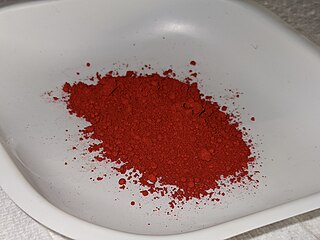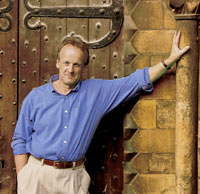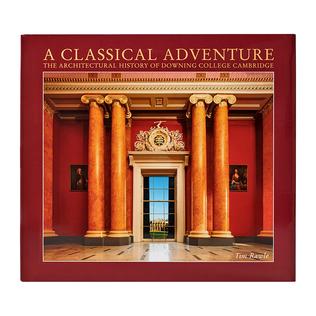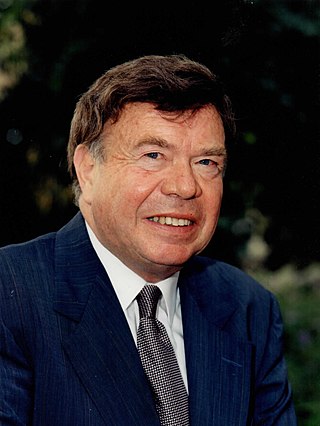Related Research Articles

Downing College is a constituent college of the University of Cambridge and currently has around 950 students. Founded in 1800, it was the only college to be added to Cambridge University between 1596 and 1869, and is often described as the oldest of the new colleges and the newest of the old. Downing College was formed "for the encouragement of the study of Law and Medicine and of the cognate subjects of Moral and Natural Science", and has developed a reputation amongst Cambridge colleges for Law and Medicine.

The macula (/ˈmakjʊlə/) or macula lutea is an oval-shaped pigmented area in the center of the retina of the human eye and in other animals. The macula in humans has a diameter of around 5.5 mm (0.22 in) and is subdivided into the umbo, foveola, foveal avascular zone, fovea, parafovea, and perifovea areas.

β-Carotene (beta-carotene) is an organic, strongly colored red-orange pigment abundant in fungi, plants, and fruits. It is a member of the carotenes, which are terpenoids (isoprenoids), synthesized biochemically from eight isoprene units and thus having 40 carbons.
The Lions Eye Institute (LEI) is an Australian medical research institute affiliated with the University of Western Australia. It was established in 1983 with support of the Lions Clubs of Western Australia and headquartered in the Perth suburb of Nedlands, Western Australia. The LEI is a not-for-profit centre of excellence that combines an ophthalmic clinic with scientific discovery developing techniques for the prevention of blindness and the reduction of pain from blinding eye conditions.

Lutein is a xanthophyll and one of 600 known naturally occurring carotenoids. Lutein is synthesized only by plants, and like other xanthophylls is found in high quantities in green leafy vegetables such as spinach, kale and yellow carrots. In green plants, xanthophylls act to modulate light energy and serve as non-photochemical quenching agents to deal with triplet chlorophyll, an excited form of chlorophyll which is overproduced at very high light levels during photosynthesis. See xanthophyll cycle for this topic.

Zeaxanthin is one of the most common carotenoids in nature, and is used in the xanthophyll cycle. Synthesized in plants and some micro-organisms, it is the pigment that gives paprika, corn, saffron, goji (wolfberries), and many other plants and microbes their characteristic color.

The mission of the Foundation Fighting Blindness is to fund research that will lead to the prevention, treatment and cures for the entire spectrum of retinal degenerative diseases, including retinitis pigmentosa, macular degeneration, Usher syndrome, Stargardt disease and related conditions. These diseases, which affect more than 10 million Americans and millions more throughout the world, often lead to severe vision loss or complete blindness.
David Anthony Newsome M.D. FARVO was a scientist, ophthalmologist, inventor, and author. He studied the treatment of age-related macular degeneration and proposed the usefulness of zinc supplements to slow the rate of vision loss from age-related macular degeneration.
Retinal gene therapy holds a promise in treating different forms of non-inherited and inherited blindness.

Gholam A. Peyman is an Iranian American ophthalmologist, retina surgeon, and inventor. He is best known for his invention of LASIK eye surgery, a vision correction procedure designed to allow people to see clearly without glasses. He was awarded the first US patent for the procedure in 1989.
The Vision Institute is a research center in the Quinze-Vingts National Eye Hospital in Paris, France. It is one of several such centers in Europe on eye diseases.

Tim Rawle is an English architectural photographer and writer. He is best known for his photographs of buildings in Cambridge, England.
Joan Whitten Miller is a Canadian-American ophthalmologist and scientist who has made notable contributions to the treatment and understanding of eye disorders. She is credited for developing photodynamic therapy (PDT) with verteporfin (Visudyne), the first pharmacologic therapy for retinal disease. She also co-discovered the role of vascular endothelial growth factor (VEGF) in eye disease and demonstrated the therapeutic potential of VEGF inhibitors, forming the scientific basis of anti-VEGF therapy for age-related macular degeneration (AMD), diabetic retinopathy, and related conditions.

John Marshall MBE, FMedSci, PhD, DSc, FRCPath, FRSB, FRCOphth(Hon), FRCOptom (Hon), FARVO is a British medical scientist and inventor. Currently he is the Frost Professor of Ophthalmology at the Institute of Ophthalmology UCL and Emeritus Professor King's College London. He is a pioneer of laser eye surgery.

A Classical Adventure: The Architectural History of Downing College, Cambridge is a book written by Tim Rawle and first published in 2015. The book is an introduction to the architectural history of Downing College, Cambridge with photographs of the college buildings by Rawle and Louis Sinclair.

Alan Norman Howard was an English nutritionist. His research interests were in the field of nutrition, initially in the nutritional relationships associated with coronary heart disease and the treatment of obesity and later into eye and brain nutrition. His inventions and patents related to very-low-calorie diets enabled him to establish the Howard Foundation. He died peacefully on 24 June 2020 in his holiday home in Cannes, France.

Paul A. Sieving is a former director of the National Eye Institute, part of the U.S. National Institutes of Health. Prior to joining the NIH in 2001, he served on the faculty of the University of Michigan Medical School as the Paul R. Lichter Professor of Ophthalmic Genetics. He also was the founding director of the Center for Retinal and Macular Degeneration in the university's Department of Ophthalmology and Visual Sciences.
Alon Harris is an American clinical scientist, professor of ophthalmology and Professor of Artificial Intelligence and Human Health, educator, inventor and researcher in the field of ocular blood flow and its relationship to diseases of the eye. Harris served as the principal or co-principal investigator on more than 60 research grants, published more than 392 peer-reviewed articles, and wrote 23 books and 70 book chapters. As of 2021, he holds two patents. Harris sits on the board of directors and the Scientific Advisory Board of The Glaucoma Foundation and is the Vice Chair of International Research and Academic Affairs, co-director of the Center for Ophthalmic Artificial Intelligence and Human Health at Mount Sinai Hospital, and Director of the Ophthalmic Vascular Diagnostic and Research Program at Icahn School of Medicine at Mount Sinai.
Ruth Ashery-Padan is an Israeli geneticist who is a professor and principal investigator in the Department of Human Genetics and Molecular Medicine at the Sackler Faculty of Medicine, Tel Aviv University. She is known for her contributions to the understanding of ocular development.
References
- ↑ Charity Commission ref 285822
- ↑ Downing College Benefactors
- ↑ Rawle, Tim (2015). A Classical Adventure – the Architectural History of Downing College, Cambridge (1st ed.). ISBN 978-0-9572867-4-0. Archived from the original on 18 June 2018. Retrieved 9 May 2018.
- ↑ "State of the art research facilities unveiled at Waterford Indtitute of Technology Vision Research Centre". Fighting Blindness. 24 February 2015.[ permanent dead link ]
- ↑ "Vision Research Centre at Carriganore officially opens the "Howard Gate"". Waterford Institute of Technology. 25 September 2013.
- ↑ Harris, R (May 2011). "Creatine in health, medicine and sport: an introduction to a meeting held at Downing College, University of Cambridge, July 2010". Amino Acids. 40 (5): 1267–70. doi: 10.1007/s00726-011-0913-3 . PMID 21509489.
- ↑ Landrum, John T; Nolan, John (18 October 2013). Carotenoids and Retinal Disease. CRC Press. ISBN 9781466502055.
- ↑ "Brain and Ocular Nutrition Conference". BON Conference. 11 July 2018.
- ↑ "Macular Carotenoids Conference Chair appointed Chair Of Human Nutrition in WIT, Ireland". Macular Carotenoids Conference. 10 July 2015.